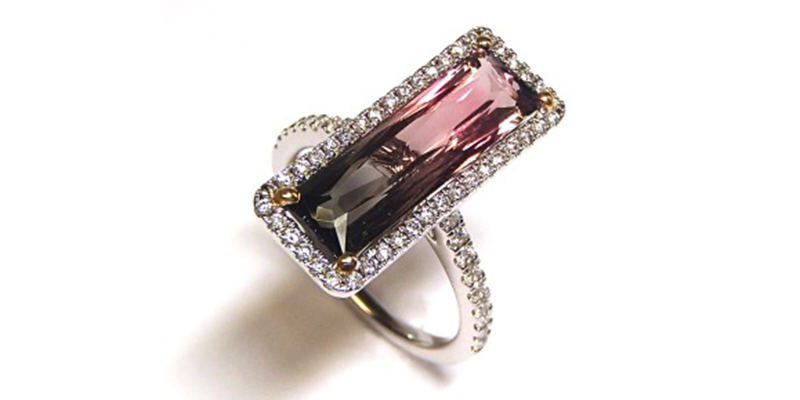 Tourmalines are one of the most versatile of gemstones, coming in a wide variety of glorious colours.
Tourmalines are one of the most versatile of gemstones, coming in a wide variety of glorious colours.
Indeed, the tourmaline has one of the widest ranges of colours of any gemstone, occurring in graduating shades of virtually every hue, which has led to their being mistaken for many other gemstones over the centuries. It’s only the development of modern technology and minerology studies that has enable us to see that the tourmaline is a whole other gemstone altogether.
Its very name comes from the Sinhalese word ‘toramalli’, meaning mixed gems, referring to the stones found there and traded by Dutch merchants. Only since the 1800’s have these stones been recognised for what they are and the pleasure they can bring to jewellery designers. In fact, they were a real favourite of Tiffany gemmologist George F Kunz, who sang the praises of the gems mined in Maine and California. Today, most tourmalines come from large deposits found in Brazil, with fabulous red stones being found in Madagascar and Afghanistan.
 What’s in a name?
What’s in a name?
Because of the wide variety of shades, it’s become necessary for some of the most sought after to be named in their own right.
Pink, red, purplish red, orange-red and brown-red tourmaline are known as Rubelite.
Dark purple-blue, blue or green-blue tourmalines are called Indicolite.
The stunning Paraíba tourmaline is a rich violet-blue or deep blue tourmaline, named for the location of its main source, Paraíba, in Brazil.
Chrome tourmaline is intense green,  Watermelon tourmaline is pink in the centre and green around the outside. These dazzlingly different gemstones can be cut on the flat, like a slice through a watermelon, or faceted, with the colour running top to bottom. Both cuts always draw comment.
Watermelon tourmaline is pink in the centre and green around the outside. These dazzlingly different gemstones can be cut on the flat, like a slice through a watermelon, or faceted, with the colour running top to bottom. Both cuts always draw comment.
Savannah tourmalines are, unsurprisingly, bright yellow, while the dramatic Schorl tourmaline is typically black, and not often used in jewellery, though it was used in mourning jewellery in the late 18th century, when that was a thing,
 Designer’s favourite
Designer’s favourite
One of the reasons we love to work with tourmaline is that, apart from the very rarest and most vivid of coloured stones, it offers a great deal more bang for our customers’ buck than the traditional coloured gemstones, the big four: sapphire, emerald, ruby and diamond. Apart from the ruby, all these gems come in a range of hues too, though not so many as the tourmaline does. However, a stunning Rubelite ring won’t hit the bank balance nearly as hard as a ruby ring!
If you’re looking for something beautiful and unusual, and uniquely yours, consider the tourmaline…you will love it forever.

